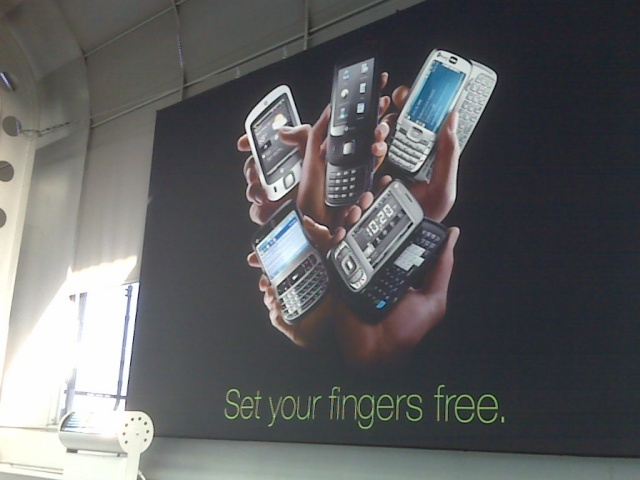Somewhere in a dark corner of Barcelona lies Mobile Advertising, with a rather tired banner proclaiming “It's going to be great in 2008” peeling away from the walls, the balloons have fallen to the floor. As the media moves on to the next big thing, the speculation and pressure have got to the mobile advertising industry.
And the Mobile Ads are going to be all the better for it. Now the limelight is off last year's golden child, it will have a much better chance of growing and providing the same boost to mobile web sites and innovation that Google's AdSense provided for mainline blogs and start-ups.

One of the key areas that needs to grow is the acceptance of the smartphone as a commerce tool. There's no point having advertising on the small mobile screen if you can't do anything with the advertising beyond promoting brand recognition - a phrase added to every presentation just to bulk up the bullet points.
Strangely enough, the rise of mobile app stores could well be one of the best things for mobile advertising. It should condition people to buy things directly from their handset, and using mobile ads to promote apps and content in a mobile store is one area that should be explored quite rapidly by developers – there's an immediate reward for the developers of the infrastructure, and for those who plan to use it. Hopefully good on-device experiences will carry over in the mind of users.
Nokia's recent announcement of the Ovi Store puts in place another vital component that mobile advertising will require, that of location awareness. While there are some multi-national companies that are happy for a global message to be played out, the vast majority of ad campaigns are run at a national level (sometimes on a continental basis, but that's rare enough to not count here).

By their very name, mobile phones could be anywhere. The ability for an ad space on a web site to know where you are is a vital demographic. While you could argue an IP look-up might help, it's not a guarantee of where the user actually is. With devices able to do Cell ID look up and place them in a small radius (and more devices every day with GPS) the location can be locked down to match the specification of an advertising campaign.
And of course, the great promise of online advertising is also the promise of mobile – we can give an exact number of people who are seeing your advertising message. Which leads to another problem – although there are huge numbers of smartphones out there, the number of eyeballs that are looking at mobile ads, compared to deskbound browser ads, is rising, but is still relatively small. For mobile advertising to fit in with present campaigns requires a significant number of views in a location, and beyond the United States you could argue that the volume is not present.
Of course, running smaller campaigns would solve that problem, butt that requires the PR and Marketing industries to move away from the volume approach they are used to in traditional media.
It's this groundswell that needs to happen – a massive increase in the awareness of advertising, the knowledge you can happily click on an advert on your device and not get stung in data charges or extra financial pain (unless you choose to buy something); and for the advertisers to realise this is a new medium witth slightly different rules in terms of engagement.
That boosts the effective inventory, the number of eyes, and the value of advertising on the smallest screen. That continues a virtuous cycle that has a wider reach and radius every time it spins round. And with the pressure of the media glare moving to other quarters, that cycle can grow in the background till it gains sufficient momentum.
At which point we'll all look surprised and wonder when it got so big.
-- Ewan Spence, Feb 2009
